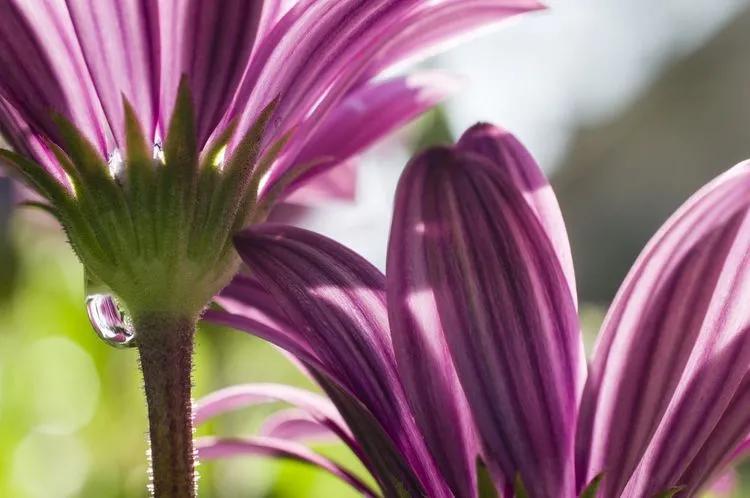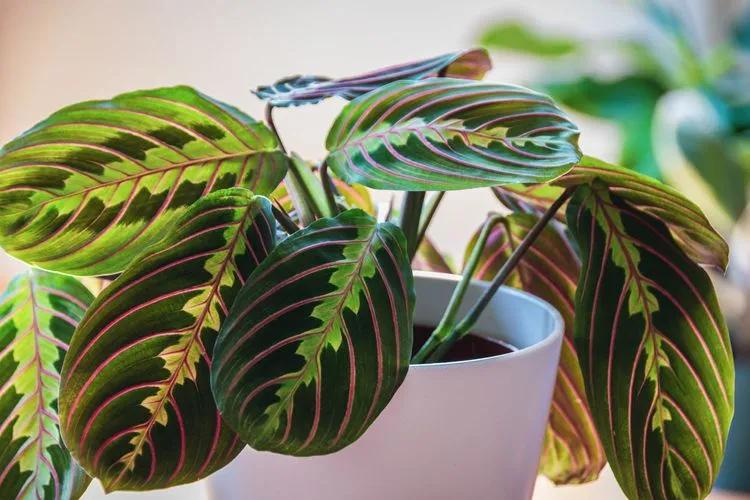Have you ever noticed how plants close their petals and leaves when it's dark? Well, this phenomenon has a name – nyctinasty. It is a fascinating process: even though we are not able to catch the moment when leaves and petals close or open, we can try to understand how this works.
What is nyctinasty?
 This term came from Greek, and it means 'night' (nux, nukt) + 'pressed' (nastos). It is also called the ‘sleep movement’ of leaves. Based solely on meaning, you can understand that this is how darkness affects plants. And you can see it in your garden, because some plants, such as tulips or crocuses, are open during daylight and close when it's getting dark. So some plants have their daily regime.
This term came from Greek, and it means 'night' (nux, nukt) + 'pressed' (nastos). It is also called the ‘sleep movement’ of leaves. Based solely on meaning, you can understand that this is how darkness affects plants. And you can see it in your garden, because some plants, such as tulips or crocuses, are open during daylight and close when it's getting dark. So some plants have their daily regime.
This is a helpful mechanism because plants can protect themselves from pests at night. And when flowers close their petals, they can save their pollen. But the most interesting question is how do plants perform it?
Nyctinasty step by step
Nyctinasty occurs as a mix of external and internal factors, such as daylight, temperature, plant hormones, and the work of different genes. It's not as simple as it seems because it involves multiple steps. Since plants don't have muscles or tendons, they have a different organ, the pulvinus, responsible for the movements. This motor organ is a base of a plant leaf or petal, and it contributes to independent actions. The cells are capable of making pulvinus swell or shrink, and this causes visible movements.
Water and turgor pressure is also essential. For staying open, a flower needs to absorb water into its cells. The turgor pressure also affects the flowers opening up.
Which plants experience nyctinasty?
 As it was mentioned above, not every plant experiences nyctinasty even though all of them have pulvinus, a vital organ for this process. There are whole families of plants that experience nyctinasty:
As it was mentioned above, not every plant experiences nyctinasty even though all of them have pulvinus, a vital organ for this process. There are whole families of plants that experience nyctinasty:
-
Fabaceae or legumes (peas, chickpeas, soybeans, beans, peanuts)
-
Marantaceae, or arrowroots (calathea, maranta)
Other examples of plants opened during the day and closed at night are vetches, clovers, and alfalfas. Among flowers, nyctynasty is performed by daisies, tulips, morning glories, lotuses, poppies, oxalises, crocuses, water lilies, and gazanias. Trees like magnolias and roses of Sharon also experience it.
When was it first noticed?
Cycles in biology were known and observed since the ancient times. Androsthenes of Thasos (4 century BC) was the first to describe nyctinasty or, as he called it, 'nyktitropic.' He was commander of ships in Alexander the Great's campaigns. During this period, he had seen a lot of different places such as the Arabian coast, India, Bahrain, etc.
And what is the most important – he was attentive to the flora of these places. He noticed that plants are capable of movement. Before that, the action itself was a characteristic that applied only to humans or animals, not to plants. But Androsthenes suggested that switches from daylight to darkness or temperature changes can cause foliage movements.
Does nyctinasty have anything in common with sleep?
 Linnaeus said poetically that nyctinasty is like falling asleep for plants. And it actually makes sense because plants close their leaves and petals when it's getting dark. Such a response to darkness is similar to sleeping. However, many scientists argued that plants are probably not conscious, so they can't sleep. Since plants don't have consciousness, then they can't experience its altered states.
Linnaeus said poetically that nyctinasty is like falling asleep for plants. And it actually makes sense because plants close their leaves and petals when it's getting dark. Such a response to darkness is similar to sleeping. However, many scientists argued that plants are probably not conscious, so they can't sleep. Since plants don't have consciousness, then they can't experience its altered states.
According to Charles Darwin, there is no accurate analogy between the sleep of animals and that of plants. And even now, we don't have enough proof that plants are conscious. That's why scientists prefer the term 'foliar nyctinasty.'
As you have noticed, plants can react to darkness, almost like humans and animals. That's why nyctinasty is sometimes compared to sleep. We hope this article explained the basics of the process, which you have probably noticed many times before.
